TRC Toolkit: SECONDARY TRAUMATIC STRESS
A. UNDERSTANDING SECONDARY TRAUMATIC STRESS FOR HEALTH CARE PROFESSIONALS
Secondary traumatic stress is frequently experienced by health care providers when they are directly exposed to the trauma of others. Recognizing signs of secondary traumatic stress is essential to maintaining the wellbeing of healthcare professionals.
Secondary traumatic stress can happen to anyone and is particularly common in the health care field. It is important to support self-care for yourself and team members and to recognize when your level of stress is increasing.
“SECONDARY TRAUMATIC STRESS IS A NORMAL RESPONSE TO ABNORMAL EVENTS.” – Laura Vega, DSW, LCSW
B. SECONDARY TRAUMATIC STRESS: MANIFESTATIONS
Guilt
Avoiding reminders of difficult experiences
Social withdrawal
Chronic exhaustion
Physical ailments
Diminished self-care
Feeling ineffective
Feeling down or depressed
Feeling apathetic
Irritability
Difficulty concentrating
Feeling angry/cynical
Intrusive or recurrent disturbing thoughts
Sleep problems
Feeling emotionally detached
Overly aware of any signs of danger
Hopelessness
C. ORGANIZATIONAL STRATEGIES FOR CREATING A SECONDARY TRAUMA-INFORMED CULTURE
The Office for Victims of Crime provides improvement strategies specifically focused on shifting a work culture into one that is trauma responsive both for patients and staff. Effectively managing secondary trauma in the workplace is essential for employee retention, wellbeing, and quality care for patients. The Vicarious Trauma Toolkit (VTT) defines a “vicarious trauma-informed organization as one that proactively assumes the responsibility to recognize and address the needs of staff in these five evidence-informed areas of organizational health:
Resources & References: the links below include steps for becoming vicarious trauma informed, and resources for implementing changes.
Blueprint for a Vicarious Trauma Informed Organization: https://ovc.ojp.gov/program/vtt/blueprint-for-a-vicarious-trauma-informed-organization
The National Child Traumatic Stress Network: Creating Trauma-Informed Systems: https://www.nctsn.org/trauma-informed-care/creating-trauma-informed-systems
According to the CDC, the implementation of stress prevention programs in hospital settings has resulted in a 50% reduction in medication errors and a 70% reduction in malpractice claims. (Stress At Work, The National Institute for Occupational Safety and Health (NIOSH). Centers for Disease Control and Prevention. 1999 DHHS (NIOSH) PUBLICATION NUMBER 99-10)
Stress prevention programs may include:
Self-report screening
Workplace self-care groups
Work/life balance
Flexible scheduling
Employee assistance programs
Use of evidence-based practices
Policy changes
Psychoeducation
Skills training
Staff retreats
Clinical group supervision
Case conferencing
D. SELF-CARE STRATEGIES AND TOOLS
Organizations are encouraged to support the health and wellness of their staff by devoting time and resources to employee self-care, prioritizing employee health, and building employee wellness into policies and procedures. In addition to organizational level changes, there are steps individuals can take to support themselves.
See Appendix H: For Self-Care Strategies and Tools, as well as the ABCs of Provider Self-Care: Awareness, Balance, Connection
E. RESOURCES & REFERENCES
Bercier, Melissa Lynn, “Interventions That Help the Helpers: A Systematic Review and Meta-Analysis of Interventions Targeting Compassion Fatigue, Secondary Traumatic Stress and Vicarious Traumatization in Mental Health Workers” (2013). Dissertations. Paper 503. http://ecommons.luc.edu/luc_diss/503
Butler, L. D., & McClain-Meeder, K. (2015). Self-Care Starter Kit. Located at http://www.socialwork.buffalo.edu/students/self-care/index.asp
National Child Traumatic Stress Network, Secondary Traumatic Stress Committee. (2011). Secondary traumatic stress: A fact sheet for child-serving professionals. Los Angeles, CA, and Durham, NC: National Center for Child Traumatic Stress. https://www.nctsn.org/sites/default/files/resources/fact-sheet/secondary_traumatic_stress_child_serving_professionals.pdf
Pearlman, Laurie and McKay, Lisa. (2008). Understanding & Addressing Vicarious Trauma: Reading Course. Headington Institute. https://www.headington-institute.org/blog/resource/understanding-vt-reading-course/
Perry, Bruce, M.D., Ph.D. (2014). The Cost of Caring: Secondary Traumatic Stress and the Impact of Working with High-Risk Children and Families. Child Trauma Academy. (ojp.gov) https://ovc.ojp.gov/sites/g/files/xyckuh226/files/media/document/sts_impact_on_child_advocates-508.pdf
The Center for Victims of Torture. (2021). Core Concepts – Handouts. Professional Quality of Life (ProQOL). https://proqol.org/self-care-tools-1
The National Child Traumatic Stress Network. (2008). Child welfare work & secondary traumatic stress. Child welfare trauma training toolkit, module 6: Managing professional & personal stress – Activity 6C: Supplemental handout. https://tnchildren.org/wp-content/uploads/2014/11/Secondary-Trauma.pdf
